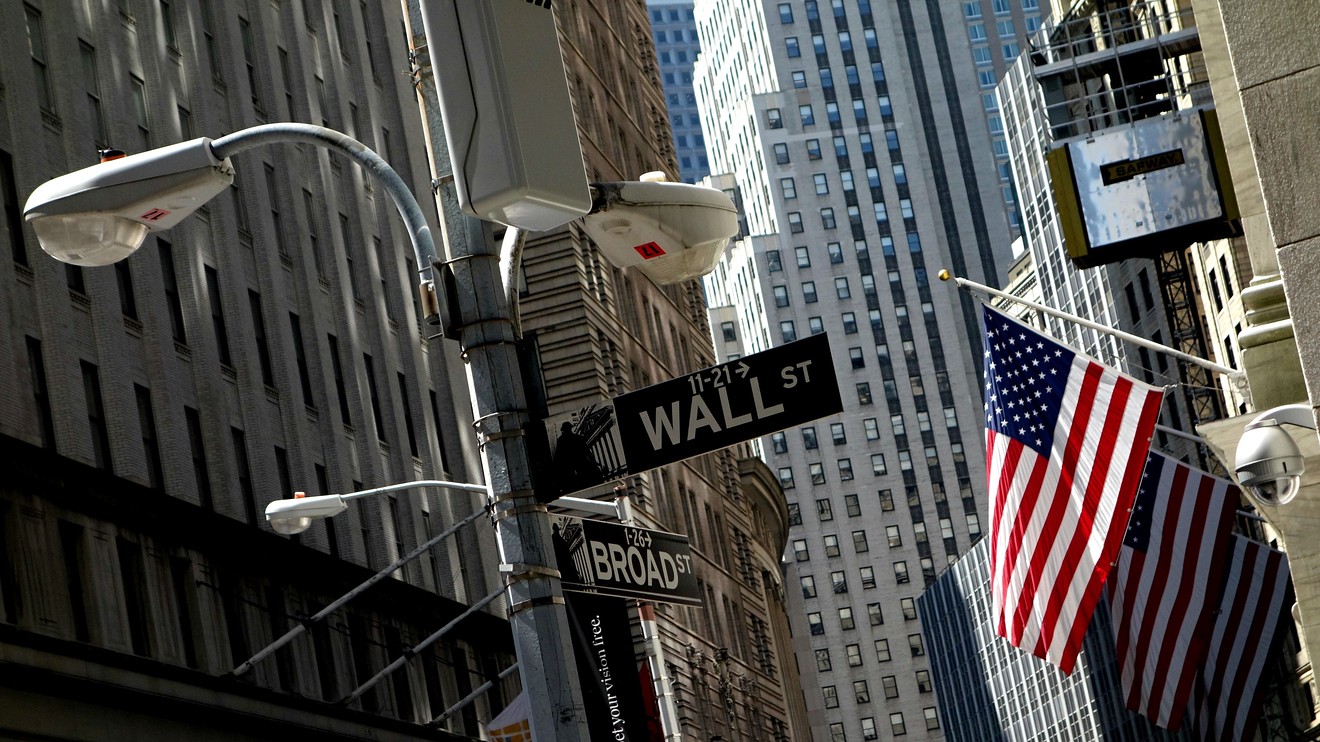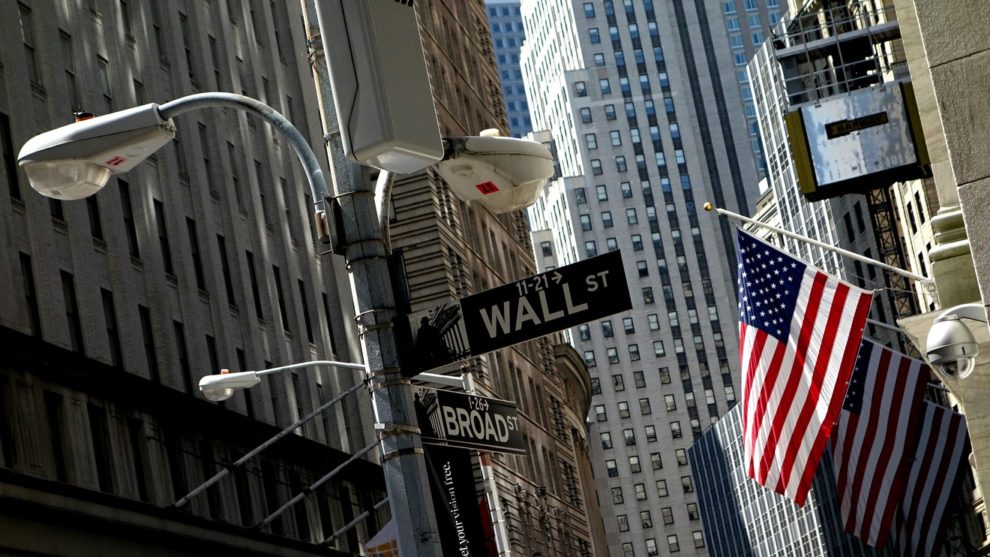
The Dow Jones Industrial Average scored its biggest one-day percentage gain in nearly 11 years on Monday, as stocks bounced back sharply from the previous week’s selloff, with the rebound fueled by expectations that policy makers will move to cushion the impact of the COVID-19 outbreak on the global economy.
How did major benchmarks fare?
The Dow Jones Industrial Average DJIA, +5.09% rose 1,293.96 points, or 5.1%, to end at 26,703.32 — its largest one-day percentage rise since March 23, 2009. The S&P 500 SPX, +4.60% rebounded 136.01 points, or 4.6%, to end at 3,090.23., while the Nasdaq Composite COMP, +4.49% advanced 384.80 points, or 4.5%, to finish at 8,952.16 — marking the biggest one-day percentage gain for both indexes since Dec. 26, 2018. Monday’s point gains were the largest on record for all three major indexes.
Last week, the Dow fell 12.4%, the S&P 500 lost 11.5% and the Nasdaq shed 10.5%, representing their worst weekly skids since 2008. Last week’s decline saw all three equity indexes fall into correction territory, widely defined as a drop of at least 10%, but less than 20%, from a recent peak, as fears of the spreading coronavirus outbreak rattled investors.
What’s driving the market?
Stocks shook off disappointing U.S. and global economic data, including a weaker-than-expected reading in the Institute for Supply Management’s manufacturing index and a record-low reading in a China purchasing managers index. Equities instead “closed up strongly on the hope that fiscal and monetary stimulus is on the way,” said Kathy Lien, managing director of FX strategy at BK Asset Management, in a note.
Expectations the Federal Reserve and other central banks will move to ease policy were credited with helping to fuel a rebound in global equities, though analysts cautioned that conditions were likely to remain volatile.
“Peoples’ first instincts are to ask for the Fed to help. They will probably act. But what I’m looking for is more central bank coordination. If we see that, you might get more of a bounce” in stocks, said Joe Saluzzi, co-head of equity trading at Themis Trading, in a phone interview.
Read: Buy the dip? Here’s how some analysts say investors should play it
The magnitude of the outbreak and its effect on the economy and supply chains remain the biggest questions for investors.
“More so than the health effects, investors are watching for how long the supply chain and corporate earnings will be affected. Will it just be one quarter or even two quarters? You don’t know, and that causes uncertainty,” Saluzzi said.
The global death toll from COVID-19 stands at more than 3,000, while health officials in Washington state on Monday said there have been four more deaths from the outbreak, bringing the total to six.
The Paris-based Organization for Economic Cooperation and Development on Monday forecast that the global economy would grow by 2.4% in its “best case scenario,” compared with 2.9% expansion projected before the viral outbreak. The OECD urged governments to act “swiftly and forcefully” to boost the world economy. Finance ministers from the Group of Seven economies were scheduled to hold a call Tuesday to discuss potential responses to the virus, according to news reports.
“It’s both the prospect of fiscal and monetary easing driving markets higher. There is willingness on the part of the Fed and other central banks in the world to lower rates. On the fiscal side, that’s up to governments, but that can be done as well,” Randy Frederick, vice president of trading and derivatives for the Schwab Center for Financial Research, told MarketWatch.
Goldman Sachs GS, +4.33% economists wrote Sunday that they expect the Fed to cut interest rates by 50 basis points soon, perhaps even before their next scheduled meeting March 17-18. That move would be followed by another 50-basis-point cut in the second quarter, they said, and would be part of a coordinated effort by the world’s central banks to ease policy.
European Central Bank President Christine Lagarde, in a statement issued after U.S. market closed, said the bank was monitoring the outbreak and stood ready to take “appropriate” steps if needed. Earlier, Bank of Japan Gov. Haruhiko Kuroda said the central bank would take steps to steady markets, and bolster liquidity through short-term lending operations and asset purchases. On Friday, Fed Chairman Jerome Powell issued a rare, unscheduled statement, emphasizing the central bank’s intention to act appropriately to address the risks posed by the coronavirus.
The global economic impacts of the outbreak are already being seen. On Saturday, official data showed China’s factory and nonfactory activity sank to record lows in February as China’s economy struggled to resume normal production following shutdowns due to the outbreak. That raised fears of a global ripple effect.
In U.S. data, the Institute for Supply Management said its manufacturing index dipped to 50.1% last month from 50.9%. Producers reported supply bottlenecks linked to the coronavirus, which has hampered their ability to get parts. Any reading below 50% indicates deteriorating conditions.
Which stocks to watch?
Shares of Dow constituent General Electric Co. GE, +3.03% rose 3% after analyst Stephen Tusa at J.P. Morgan upgraded the industrial conglomerate, raising it from neutral to overweight. As a well-known bear on GE, Tusa’s views have been influential in how investors have perceived the stock’s value.
Gilead Sciences Inc. GILD, +8.71% said it plans on buying cancer-therapy firm Forty Seven Inc. FTSV, +61.91%. Shares of Forty Seven rose 62%, compared with an 8.7% climb for Gilead.
Shares of Mobile Mini Inc. MINI, +5.21% rose 5.2% Monday, after the portable storage solutions company agreed to be acquired by WillScot Corp. WSC, -2.34% in a deal that values Mobile Mini at about $1.9 billion. WillScott Corp. shares fell 2.3%.
Tesla Inc. TSLA, +11.32% shares rose more than 11%, snapping a five-day losing streak that saw them tumble 25.9% on worries over the impact of the coronavirus outbreak.
How did other markets fare?
Asian markets rose on the expectation for further stimulus, with Japan’s Nikkei NIK, -1.22% logging a nearly 1% gain, while China’s CSI 300 index 000300, +0.44% surged 3.3%.
The ICE U.S. Dollar Index DXY, +0.08% slipped 0.8% against a basket of currency trading partners.
Gold for April delivery GCJ20, +0.00% rebounded 1.8% after suffering a nearly 5% decline on Friday, while the 10-year U.S. Treasury yield TMUBMUSD10Y, -3.16% fell 4.2 basis points to 1.085%, after touching an all-time low of 1.03% in overnight trading.
Oil prices jumped with West Texas Intermediate crude for April delivery CLJ20, +1.67% rising 4.5% to end at $46.75 a barrel.
-Mark DeCambre and Mike Murphy contributed to this article.
div > iframe { width: 100% !important; min-width: 300px; max-width: 800px; } ]]>











Add Comment